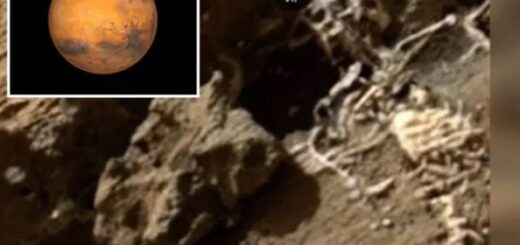Dark DNA Phenomenon – One Of The Strangest Discoveries So Far
The Dark DNA phenomenon is one of the strangest discoveries in science so far.
Unraveling the mystery of Dark DNA gives unique insight into unanswered questions about animals and change our current understanding of evolution.

The name likens it to dark matter, which is said to comprise 25% of the universe, yet so far remains elusive. In evolutionary biology, researchers can look at the genomes of species, see which genes cross over, and begin to decipher what function each serves.
With help of DNA sequencing technology, scientists can have a better idea of how the giraffe got its huge neck and why snakes are so long. Genome sequencing allows us to compare and contrast the DNA of different animals and work out how they evolved in their own unique ways.
But in some cases we’re faced with a mystery. Some animal genomes seem to be missing certain genes, ones that appear in other similar species and must be present to keep the animals alive. These apparently missing genes have been dubbed “dark DNA”. And its existence could change the way we think about evolution.
Dark DNA is rare but not unheard of. It’s been detected in bird species before. In a study published in Genome Biology, scientists found that a total of 274 genes were absent in many bird species, yet necessary for almost all vertebrates. Once again, GC-rich DNA was detected. So far, hidden genes haven’t been found outside of these two cases. Hargreaves wonders just how prevalent they actually are.
Most textbook definitions of evolution state that it occurs in two stages: mutation followed by natural selection. DNA mutation is a common and continuous process, and occurs completely at random.
Natural selection then acts to determine whether mutations are kept and passed on or not, usually depending on whether they result in higher reproductive success. In short, mutation creates the variation in an organism’s DNA, natural selection decides whether it stays or if it goes, and so biases the direction of evolution.
But hotspots of high mutation within a genome mean genes in certain locations have a higher chance of mutating than others. This means that such hotspots could be an underappreciated mechanism that could also bias the direction of evolution, meaning natural selection may not be the sole driving force.
So far, dark DNA seems to be present in two very diverse and distinct types of animal. But it’s still not clear how widespread it could be. Could all animal genomes contain dark DNA and, if not, what makes gerbils and birds so unique? The most exciting puzzle to solve will be working out what effect dark DNA has had on animal evolution.



 Creators of mankind
Creators of mankind Description of “Tall white aliens”
Description of “Tall white aliens” Where they came from?
Where they came from? About hostile civilizations
About hostile civilizations The war for the Earth
The war for the Earth “Tall white aliens” about eternal life
“Tall white aliens” about eternal life Video: “Nordic aliens”
Video: “Nordic aliens” Aliens
Aliens Alien encounters
Alien encounters The aliens base
The aliens base UFO
UFO Technology UFO
Technology UFO Underground civilization
Underground civilization Ancient alien artifacts
Ancient alien artifacts Military and UFO
Military and UFO Mysteries and hypotheses
Mysteries and hypotheses Scientific facts
Scientific facts


















